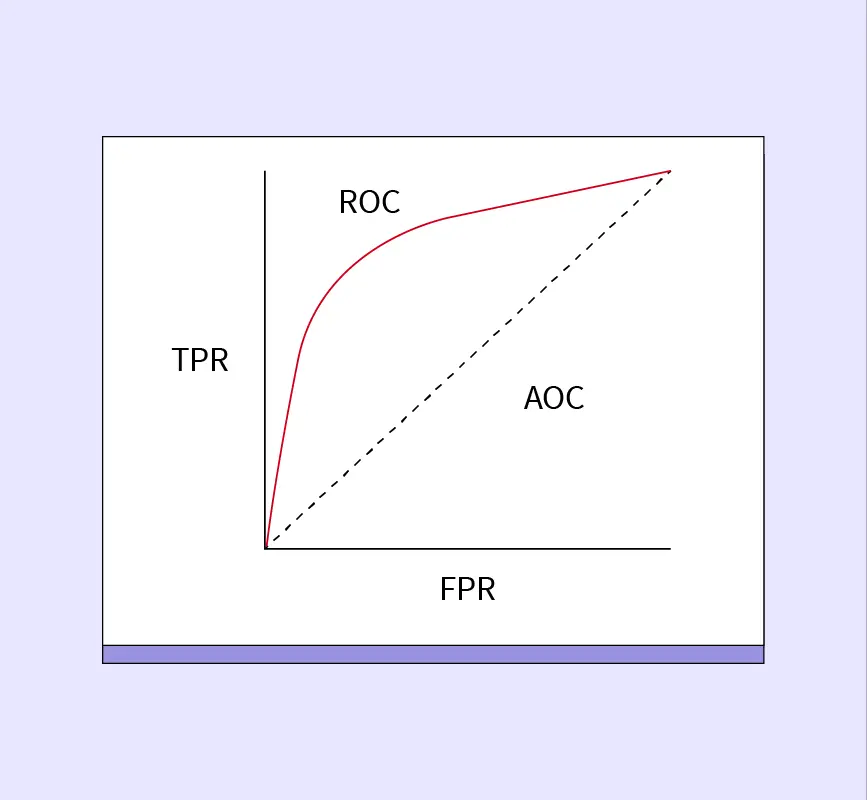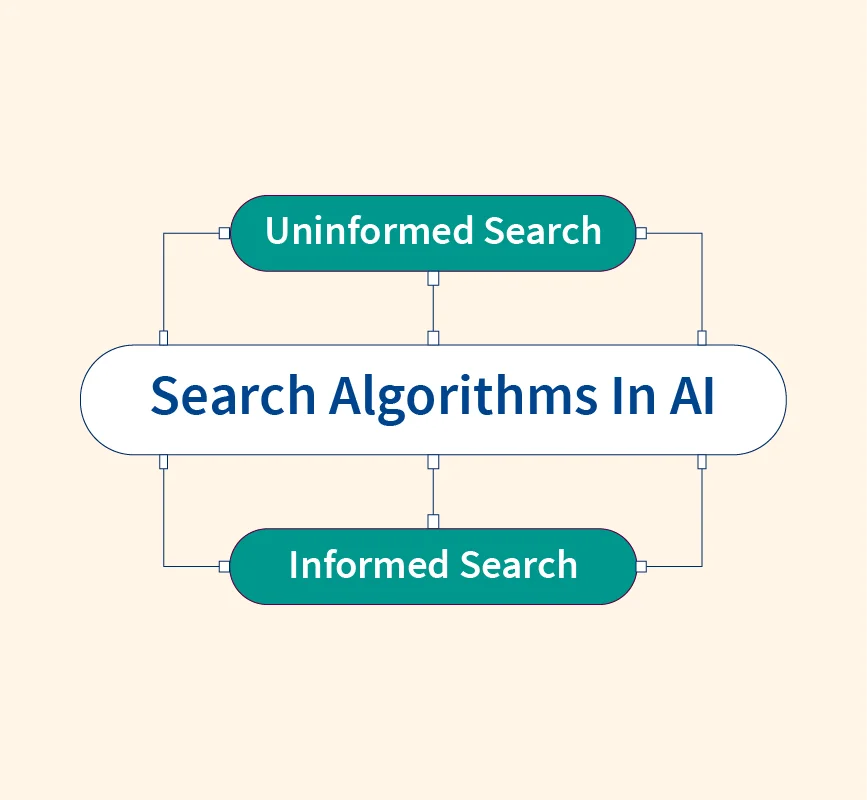Probability theory plays a foundational role in artificial intelligence (AI) by helping systems reason, make predictions, and handle uncertainty. In AI, especially in real-world scenarios, outcomes are rarely deterministic. Agents must often make decisions with incomplete or noisy information, requiring a framework to measure, update, and infer probabilities dynamically.
One of the most important tools enabling this probabilistic reasoning is Bayes’ Theorem. Bayes’ Theorem provides a mathematical way to update beliefs based on new evidence, forming the backbone of various AI methods, including machine learning models, robotics, natural language processing, and expert systems.
Understanding Bayes’ Theorem
Bayes’ Theorem is a mathematical formula used to update the probability of a hypothesis based on new evidence. It provides a structured way to revise prior beliefs when presented with additional data.
Key Terms in Bayes’ Theorem
- Prior Probability (P(H)): The initial belief or probability of a hypothesis (H) before observing new evidence.
Example: Probability that an email is spam before reading it. - Likelihood (P(E|H)): The probability of observing evidence (E) assuming the hypothesis (H) is true.
Example: Probability of finding the word “discount” in a spam email. - Posterior Probability (P(H|E)): The updated probability of the hypothesis (H) after observing the evidence (E).
Example: Adjusted probability that an email is spam after seeing “discount” in the message. - Evidence (P(E)): The overall probability of observing the evidence across all hypotheses.
Understanding these components helps frame decision-making in uncertain environments, a core need in AI.
Mathematical Formula and Derivation of Bayes’ Rule
The mathematical expression for Bayes’ Theorem is:
$$P(H|E) = \frac{P(E|H) \times P(H)}{P(E)}$$
Where:
- $P(H|E)$ = Posterior probability
- $P(E|H)$ = Likelihood
- $P(H)$ = Prior probability
- $P(E)$ = Marginal probability of evidence
Derivation (simplified):
From conditional probability rules:
$$P(H \cap E) = P(E|H) \times P(H) = P(H|E) \times P(E)$$
Rearranging gives Bayes’ Rule.
Simple example: Suppose 5% of emails are spam (P(Spam)=0.05P(\text{Spam}) = 0.05P(Spam)=0.05). If “discount” appears 90% of the time in spam emails but only 10% in non-spam, Bayes’ Theorem helps update the probability that an email containing “discount” is spam.
Why Bayes’ Theorem is Relevant in AI?
In artificial intelligence, uncertainty is a constant. AI systems often make decisions with incomplete, noisy, or ambiguous data. Bayes’ Theorem provides a principled way for these systems to reason probabilistically, allowing them to update their understanding of the world as new evidence becomes available.
Probabilistic thinking is essential in AI because many real-world environments are dynamic and unpredictable. For example, a self-driving car must predict pedestrian behavior, a medical AI must diagnose based on partial symptoms, and a recommendation system must guess preferences from limited user interactions. Bayes’ Theorem enables AI to manage these uncertainties intelligently, rather than making rigid, deterministic decisions.
Moreover, Bayesian reasoning closely mirrors human decision-making. Humans continuously revise their beliefs based on new observations—whether diagnosing an illness, adjusting expectations in a conversation, or anticipating weather changes. Similarly, Bayesian AI models update probabilities to make adaptive, context-aware decisions.
In supervised learning, Bayesian techniques are used to estimate model parameters and make predictions with associated confidence levels. In probabilistic models like Bayesian networks and Hidden Markov Models, Bayes’ Theorem forms the mathematical backbone, allowing AI to infer hidden states, forecast outcomes, and model complex systems under uncertainty.
Applications of Bayes’ Theorem in Artificial Intelligence
Bayes’ Theorem powers a wide range of AI applications by enabling systems to update predictions and make decisions based on evidence. Here are some notable examples:
1. Spam Detection
Spam filters in email systems commonly use Bayesian reasoning to classify incoming messages as “spam” or “not spam.” The model starts with a prior probability of a message being spam. As it analyzes words or phrases within the email (evidence), it updates its belief based on the likelihood of those terms appearing in known spam or legitimate messages.
For example, if an email contains words like “free,” “winner,” or “discount,” the probability of it being spam increases. Bayesian spam filters dynamically adapt over time, improving their accuracy as they learn from more emails.
2. Medical Diagnosis Systems
Medical AI systems leverage Bayes’ Theorem to predict diseases based on observed symptoms. Doctors and diagnostic tools start with prior probabilities (e.g., prevalence of a disease in a population). When symptoms like fever, cough, or chest pain are observed (evidence), Bayes’ Rule helps update the probability that a patient has a specific condition, such as pneumonia or COVID-19.
This probabilistic reasoning allows for dynamic, evidence-based diagnosis, even when symptoms are overlapping or ambiguous. It reduces misdiagnosis and supports clinical decision-making with calculated risk assessments.
3. Machine Learning Algorithms (Naïve Bayes Classifier)
The Naïve Bayes Classifier is one of the simplest yet powerful machine learning algorithms, especially for text classification tasks like spam detection, sentiment analysis, and document categorization. It assumes that all features are independent given the class label—a strong assumption, but one that makes computation fast and scalable.
Using Bayes’ Theorem, the model calculates the posterior probability of a text belonging to a certain class and selects the class with the highest probability. Despite its simplicity, Naïve Bayes often achieves surprisingly high accuracy in real-world AI tasks.
4. Robotics and Perception
In robotics, Bayes’ Theorem underpins probabilistic perception techniques like sensor fusion, simultaneous localization and mapping (SLAM), and robot navigation. Robots integrate uncertain sensor data (e.g., from cameras, LiDAR) using Bayesian updating to build maps, localize themselves, and navigate dynamically changing environments with resilience to noise and error.
Bayes’ Theorem in Machine Learning: Deeper Insights
In machine learning, Bayesian inference plays a crucial role in estimating model parameters and updating beliefs about data as more observations are gathered. Instead of assuming a fixed set of parameters, Bayesian methods treat parameters as probabilistic variables, continuously adjusting their distributions based on new training examples. This approach allows models to quantify uncertainty and provide probabilistic predictions rather than single-point estimates.
A key application of Bayes’ Theorem in AI is through Bayesian Networks—graphical models that represent a set of variables and their conditional dependencies using a directed acyclic graph (DAG). Each node represents a random variable, and edges depict probabilistic relationships between variables. Bayesian networks are widely used in diagnostic systems, predictive analytics, decision support tools, and natural language processing tasks where reasoning about uncertainty and causality is essential.
Compared to purely frequentist approaches, which rely solely on observed data and point estimates, Bayesian methods incorporate prior beliefs into the learning process. This prior knowledge can guide the model when data is sparse or noisy, making Bayesian learning particularly robust in real-world AI applications. Additionally, Bayesian models naturally provide confidence intervals and probabilistic interpretations, which are often critical for risk-sensitive fields like healthcare, finance, and autonomous systems.
Example: Applying Bayes’ Theorem in a Simple AI Problem
Let’s walk through a simple disease diagnosis problem using Bayes’ Theorem step-by-step.
Problem Statement
Suppose a patient is tested for a rare disease that affects 1% of the population.
The test is 95% accurate, meaning:
- If a person has the disease, the test correctly identifies it 95% of the time (True Positive Rate).
- If a person does not have the disease, the test correctly returns negative 95% of the time (True Negative Rate).
Now, if a patient’s test result comes back positive, what is the probability that the patient actually has the disease?
Given Data
- $P(\text{Disease}) = 0.01$ (Prior probability of disease)
- $P(\text{No Disease}) = 0.99$
- $P(\text{Positive}|\text{Disease}) = 0.95$ (Test sensitivity)
- $P(\text{Positive}|\text{No Disease}) = 0.05$ (False positive rate)
We need to find: $P(\text{Disease}|\text{Positive})$ (Posterior probability).
Step-by-Step Calculation Using Bayes’ Rule
Bayes’ Theorem formula:
$$P(\text{Disease}|\text{Positive}) = \frac{P(\text{Positive}|\text{Disease}) \times P(\text{Disease})}{P(\text{Positive})}$$
First, calculate $P(\text{Positive})$ (total probability of a positive test):
$$P(\text{Positive}) = P(\text{Positive}|\text{Disease}) \times P(\text{Disease}) + P(\text{Positive}|\text{No Disease}) \times P(\text{No Disease})$$
$$P(\text{Positive}) = (0.95 \times 0.01) + (0.05 \times 0.99) = 0.0095 + 0.0495 = 0.059$$
Now, applying Bayes’ Theorem:
$$P(\text{Disease}|\text{Positive}) = \frac{0.95 \times 0.01}{0.059} = \frac{0.0095}{0.059} \approx 0.161$$
Thus, even after a positive test, the probability that the patient actually has the disease is only about 16.1%.
Tree Diagram
Imagine a tree:
- Start with 1000 people.
- 10 people have the disease (1%).
- 9.5 test positive (95% accuracy).
- 990 people do not have the disease.
- 49.5 still test positive (5% false positive rate).
- 10 people have the disease (1%).
Total positive tests = 9.5 + 49.5 = 59. Chance of actual disease among positives = 9.5 / 59 ≈ 16.1%.
Advantages of Using Bayes’ Theorem in AI
Bayes’ Theorem offers several compelling advantages that make it a powerful tool in AI development:
- Handles Uncertainty Elegantly: Bayesian reasoning provides a structured, principled way to deal with uncertain, incomplete, or noisy data, which is common in real-world AI scenarios.
- Works Well with Small Datasets: Unlike many machine learning models that require large volumes of data, Bayesian methods can make meaningful inferences even when data is sparse or limited, by combining observed evidence with prior beliefs.
- Incorporates Prior Knowledge: Bayesian models allow for the integration of expert knowledge or historical data through prior probabilities, making them highly adaptable in fields like healthcare, finance, and risk management.
- Simple Yet Powerful Inference Mechanism: Despite its mathematical simplicity, Bayes’ Theorem underpins highly sophisticated AI systems, enabling flexible, dynamic updates to predictions as new information becomes available.
Challenges and Limitations of Bayes’ Theorem in AI
Despite its strengths, Bayes’ Theorem faces several practical challenges in AI:
- Requires Accurate Prior Probabilities: If the initial prior assumptions are inaccurate or subjective, the resulting predictions can be significantly biased, leading to poor decision-making.
- Computationally Expensive for Complex Problems: In high-dimensional spaces or large datasets, calculating exact posterior probabilities can become computationally intensive, sometimes requiring approximation methods like Monte Carlo simulations.
- Sensitive to Biased or Incomplete Data: Bayesian models heavily rely on the quality and representativeness of both prior information and observed data. Biases or missing data can distort outcomes and reduce model reliability.
Conclusion
Bayes’ Theorem serves as a cornerstone for probabilistic reasoning in artificial intelligence, empowering systems to make informed decisions under uncertainty. Its ability to update beliefs dynamically based on new evidence mirrors human learning and is critical for building adaptive, intelligent models.
From spam detection and medical diagnosis to robotics and natural language processing, Bayesian principles enhance AI’s robustness and flexibility. As AI systems grow more complex, mastering deeper Bayesian approaches—such as Bayesian networks and probabilistic programming—becomes increasingly valuable for practitioners aiming to build reliable, real-world AI solutions that reason, predict, and adapt intelligently.
References:


